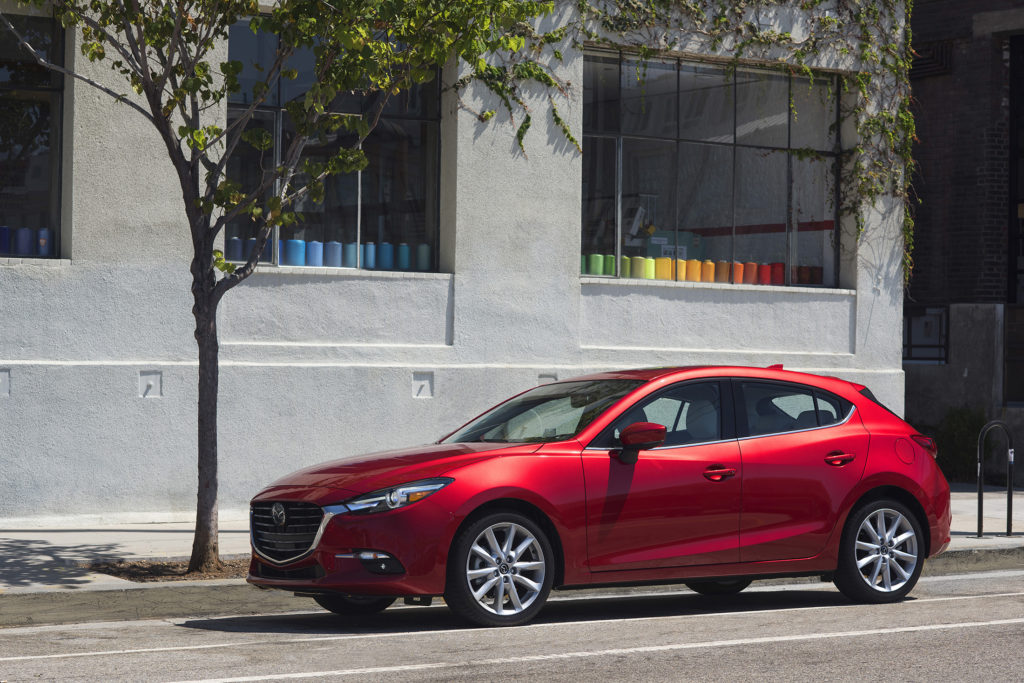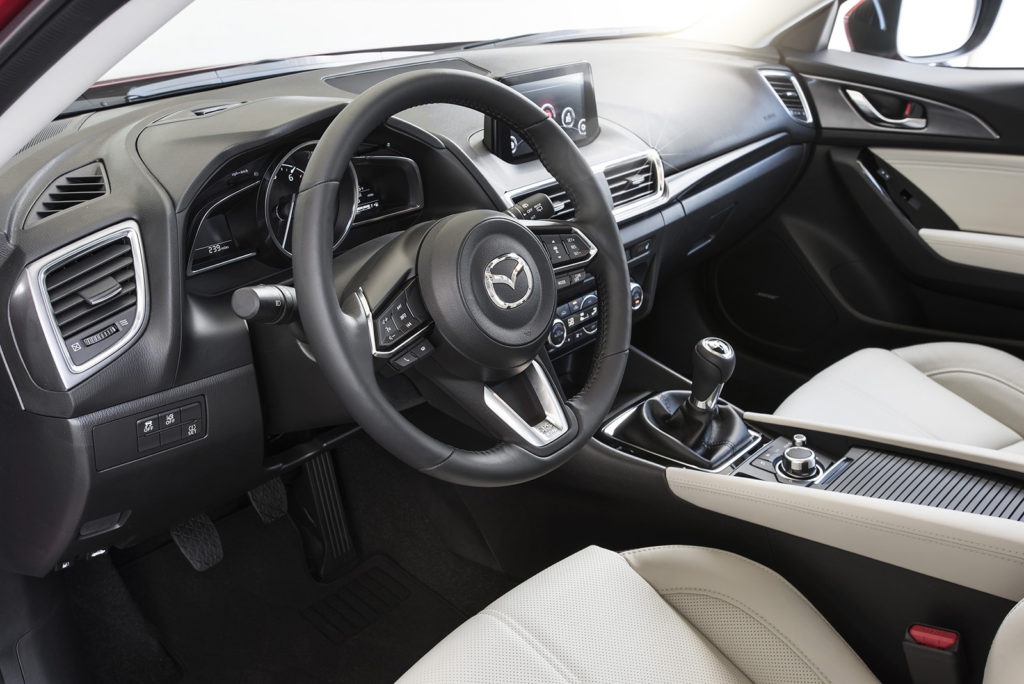Cargazing
By Derek Price
Before I go too far down a nerdy path, let’s cover the one thing you need to know about the Mazda3.
This car ought to be at the top of your list if you live on a budget and care about handling. It nails the connection between driver and machine like no other car in its price class, starting around $18,000 for the sedan and $19,000 for the hatchback.
There. That’s what you need to know if you read nothing else about this car.
Some of the black magic behind its sparkling handling, though, is where things start to get geeky.
And I find it absolutely fascinating.
For 2017, the Mazda3 adds a new technology called G-Vectoring Control (GVC) that’s unlike anything I’ve seen in a car before. I’m particularly surprised that it’s standard on the entry-level trim of an affordable, mass-market car, not on some exotic, race-bred supercar.
At first, I figured GVC was simply Mazda’s term for torque vectoring, that newfangled but increasingly common way some of today’s most sophisticated cars send power to individual wheels when they start to slip — say, on wet or icy roads.

The Mazda3 gets some styling changes for 2017, but the most innovative update is to the computer code that controls its engine.
GVC is nothing like that.
What it does is apply more of the car’s weight to the front wheels when it’s needed, usually when changing direction. It has less to do with power distribution and more to do with weight or pressure distribution as the car moves.
It makes perfect sense. When the front wheels of your front-wheel-drive car start to slip in a corner, you can give yourself a bit more traction by tapping the brakes to put more weight on them. The car’s mass shifts over the front axle, the front tires regain their grip, and with any luck you keep yourself from careening into a tree.
Mazda’s engineers initially planned to do just that: subtly apply the car’s brakes to automatically send more weight over the front axle when it’s needed. They say that was too slow and awkward feeling, though (not to mention already being done by some Nissan cars, hence fewer bragging rights at those thrilling engineer cocktail parties).
Instead of using the brakes, Mazda decided to reduce the ignition spark so the engine does the braking. It’s faster. It’s smoother. It’s so subtle that most drivers will never notice it. And it’s effective, helping to add around eight pounds of weight to the front end and increasing the size of the Mazda3’s front tire contact patch at the instant it’s required.
Better yet, it’s done entirely through the car’s software, not creating any added weight or complex parts, Mazda claims.

Better materials, more sound insulation and a new design give the Mazda3’s cabin a more upscale feel this year.
Beyond its geeky but impressive science-project computer code, the Mazda3 adds some predictable changes for a refreshed car. There’s a new design for the side mirror, front fascia and bumpers, two new colors, repackaged trim levels and a snazzy new look for its 18-inch wheels.
The biggest change is on the inside, where a mild but broad-reaching overhaul makes it feel like a more premium product. Mazda added sound insulation, improved the materials, and gave it bigger storage spaces and a fresh appearance to deliver a more upscale experience overall.
Radar cruise control, lane keep assist and a well-designed navigation system gave my sample car even more of that high-end feel, with an as-tested price just under $28,000.
At A Glance
What was tested?
2017 Mazda3 5-Door Grand Touring ($23,895). Options: Cargo mat ($75), rear bumper guard ($100), door sill trim plates ($125), premium equipment package ($1,600), i-ACTVS safety package ($1,100). Price as tested (including $835 destination charge): $27,730
Wheelbase: 106.3 in.
Length: 175.6 in.
Width: 70.7 in.
Height: 57.3 in.
Engine: 2.5-liter four cylinder (184 hp, 185 ft.-lbs. torque)
Transmission: Six-speed manual
Fuel economy: 25 city, 33 highway
RATINGS
Style: 9
Performance: 7
Price: 9
Handling: 10
Ride: 7
Comfort: 6
Quality: 7
Overall: 8
Why buy it?
If you want to feel connected to a machine, no other car does as good a job as the Mazda3 at this price. It’s great at delivering precise, enjoyable feedback to the driver.
